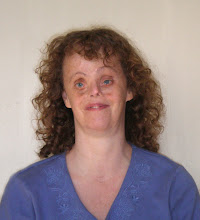Thursday, March 14, 2013
Service Models
Whether governmental or private, agencies aiming to help people function on the principle of doing the greatest good for the greatest number. Whatever their niche, their goal is to provide services and support to as many as possible. It becomes a formula composed of maximizing benefit while husbanding resources all targeted at the typical person trying to be served. Thus, support that does not attract the target population is discontinued and services not utilized by a significant number of people are viewed as wasteful.
Think about the nature of people with disabilities as a population. Because of lack of access, we often are not engaged in community life. This lack of visibility means our need for access isn't obvious or immediate. Thus, there continues to be a lack of access and we remain undetectable.
Even when we have full access, our presence is still in the minority, especially when we are subcategorized based on our disability-related needs. Because Deaf people need one thing and blind people might need another, we become separate items on a to do list and different line items on a budget. "Full access to all people with disabilities" becomes meaningless to an agency head when the reality of our differing needs factors into program development, planning and funding.
To meet the needs of our seemingly small population, the expenditures of effort to become educated about how to accomplish it and the money necessary to achieve it are high. In contrast, the payoff in terms of benefiting a few people seems small.
When the typical service model meets the needs of people with disabilities, things do not turn out well. Why would an agency expend significant resources to benefit only a few individuals? How can continuing a program that only serves a few people be justified? How do you overcome the seeming illogic of providing services when there is nobody there to partake of them?
I have been confronting these issues for quite some time as I attempt to convince my local LGBT Community Center to make some changes that meet the needs of blind and visually impaired people. My basic plea, "I know there aren't a lot of us running around here, but this still matters" has not penetrated. They are an agency engaged in serving a specific population trying to make scarce resources stretch to meet that community's needs. Why bother with the needs of 4 people that will take away from benefiting thousands? Within the parameters of the service model they utilize, they are entirely right.
In the past year, I have also worked with my local Pride organization. Theoretically functioning within the same service model, they have taken a different approach. "It's important." While far from perfect, there is at least a desire to provide the services disabled people need so that they too can fully participate in and enjoy Pride.
The striking disparity of the two experiences has been heavy in the back of my mind. The conclusion that finally emerged is that those ingrained in the service model I've described do not suddenly look up one day and see the shortcomings of it. Until they do, there is nothing you can say or do that will convince them that inclusion of one disabled person is important in a way that exists outside of resource marshalling, the greatest good for the greatest number, and the bottom line.
The funny thing is this: service agencies are there to help people. The bottom line is supposed to be the business of corporations and accountants. When did the business of helping become the business of exclusion, dollars and cents?
Subscribe to:
Post Comments (Atom)

No comments:
Post a Comment